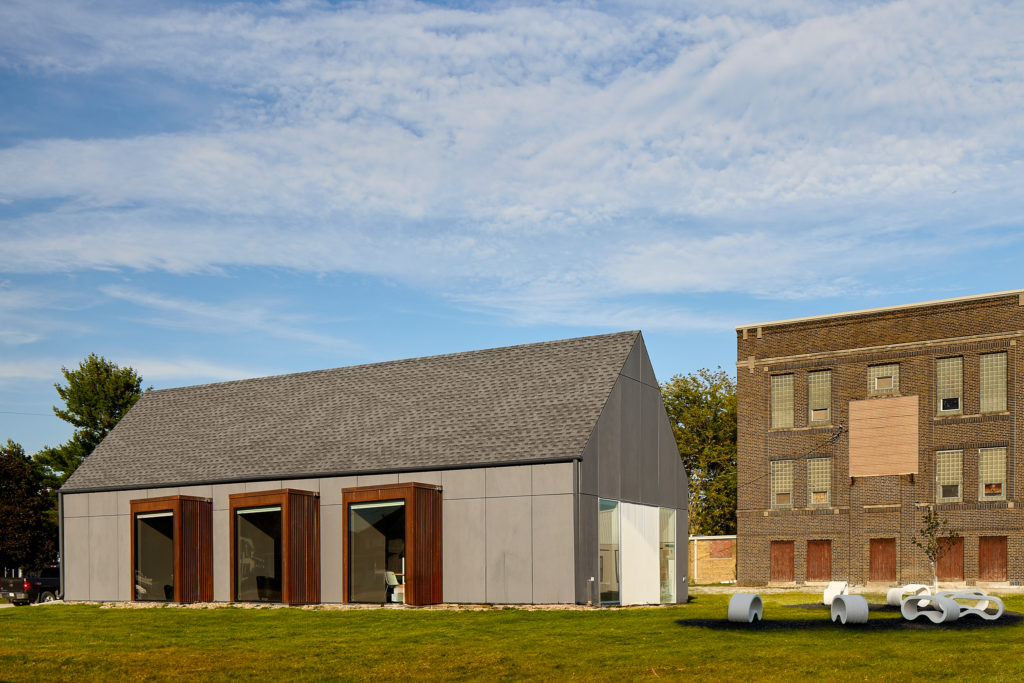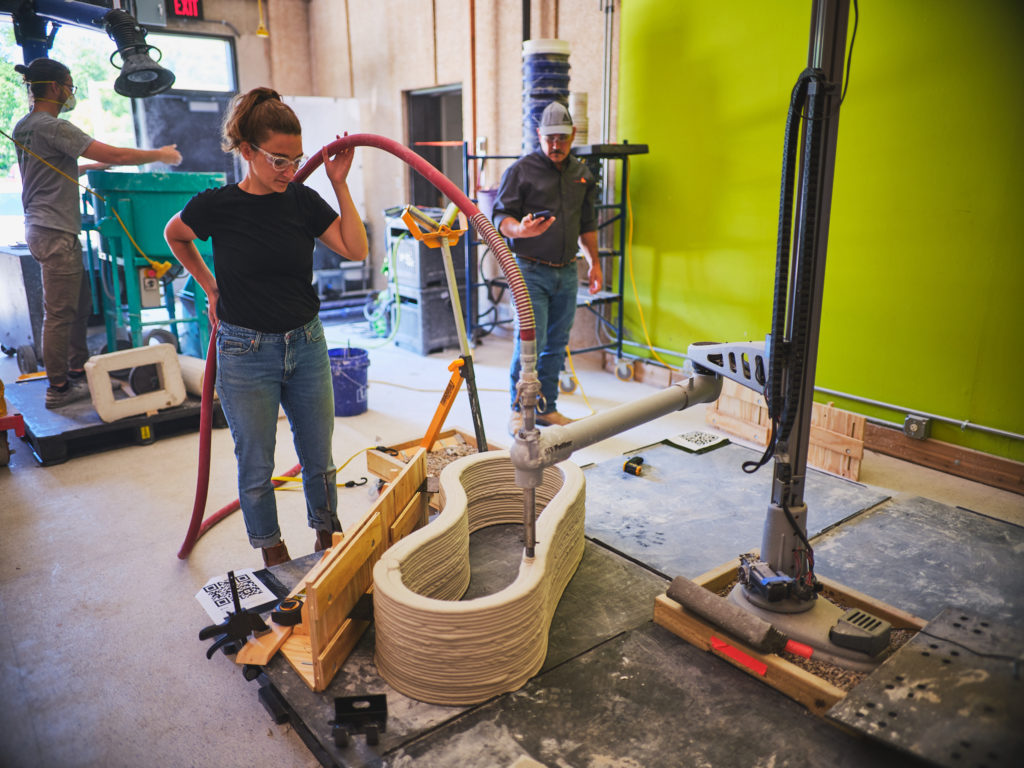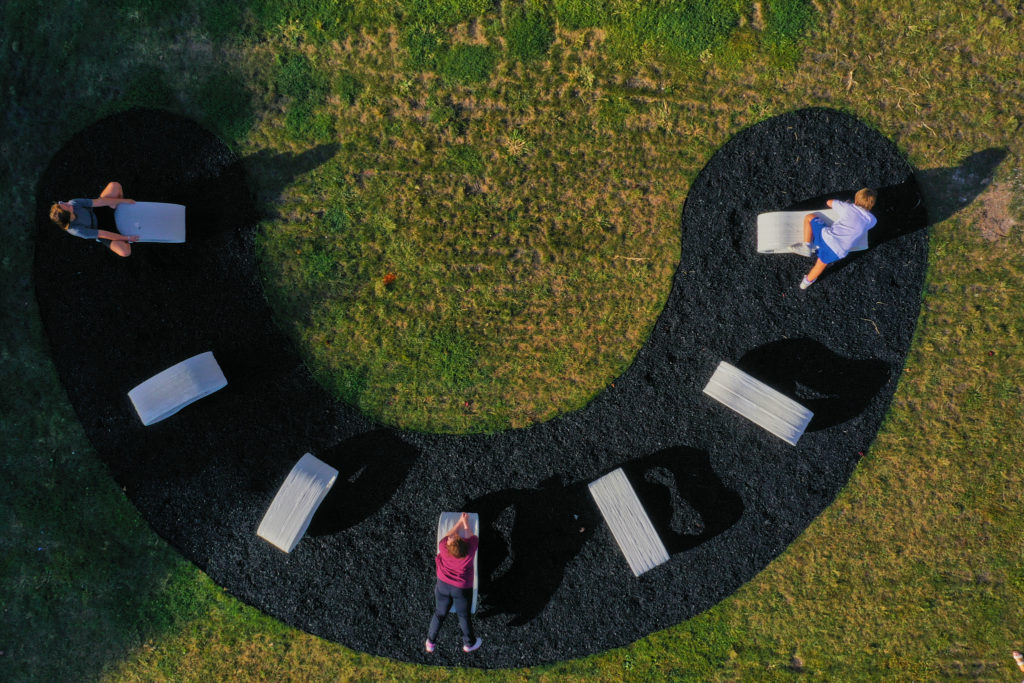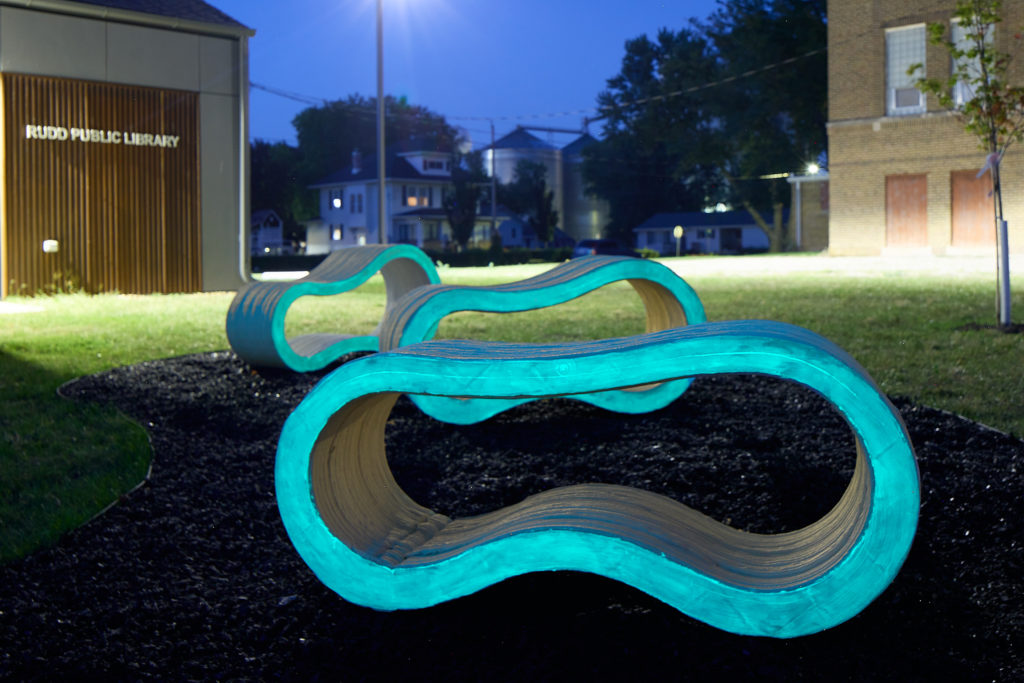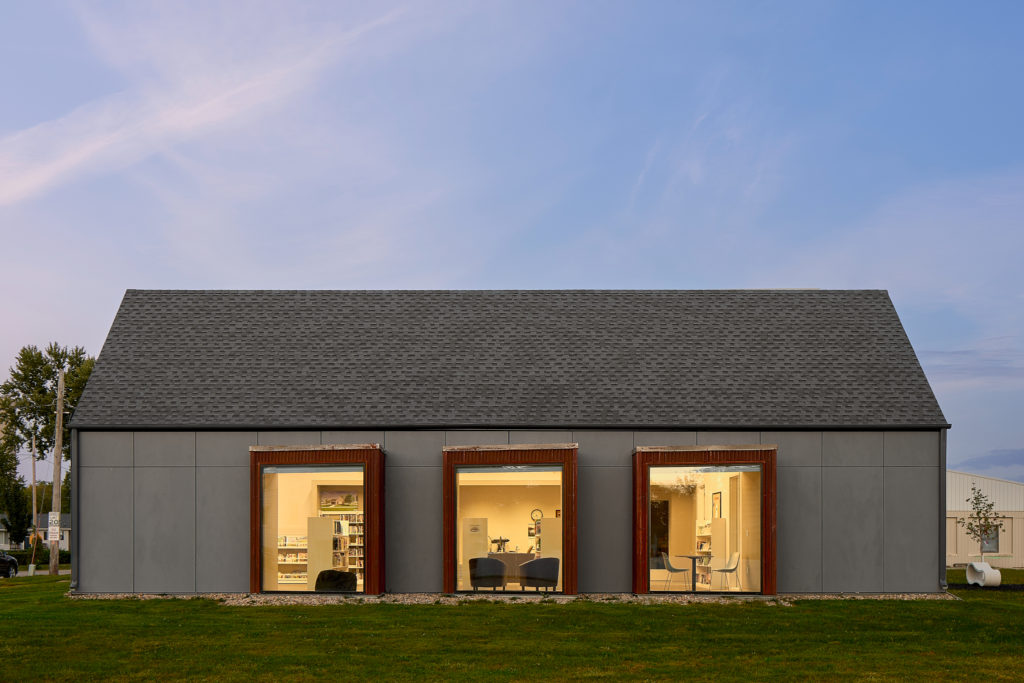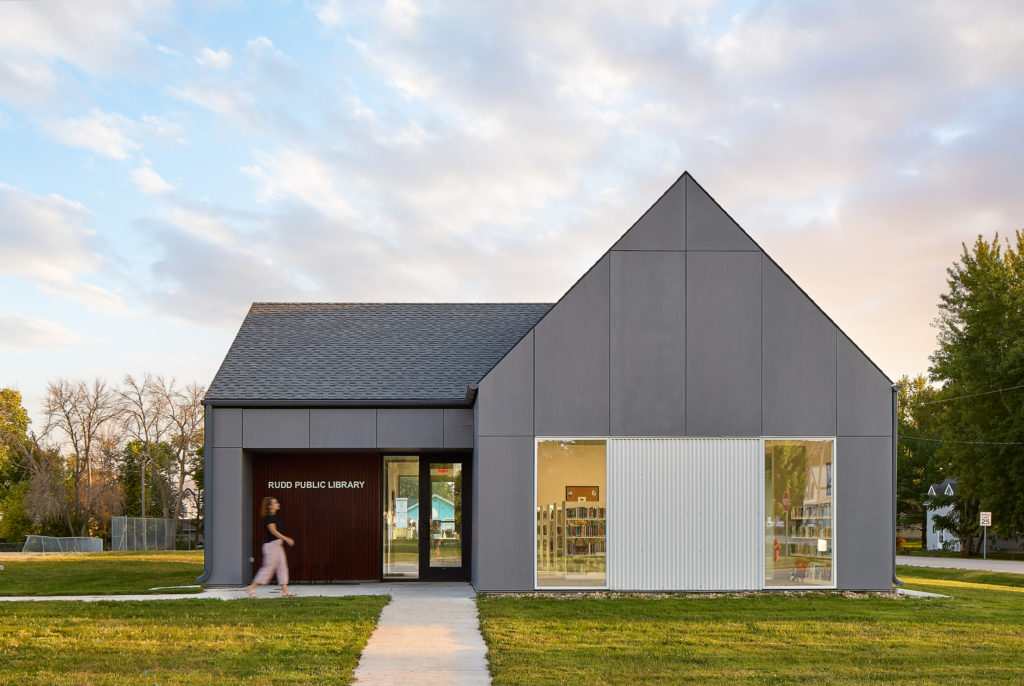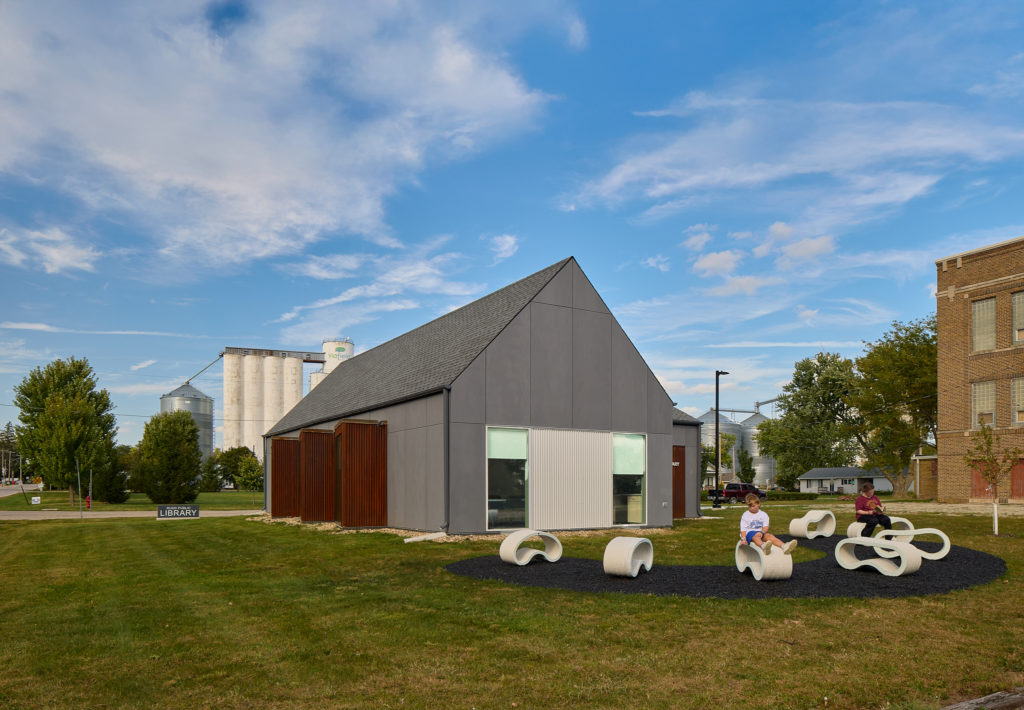Rural public library builds back better, if not a lot bigger
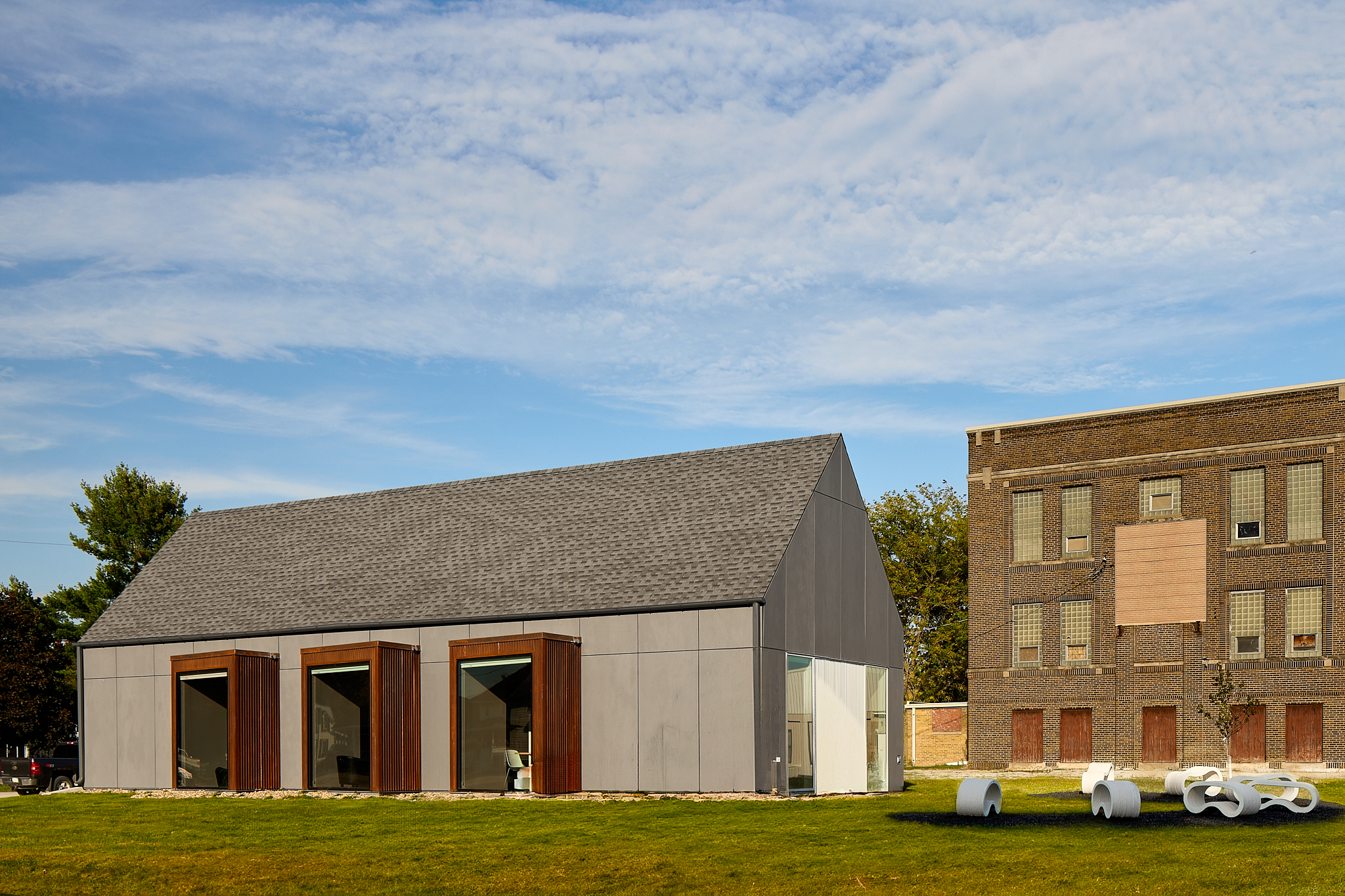
Measured by either population or square miles, Rudd, a tight-knit farming community of 358 tucked in north central Iowa less than 30 minutes from the Minnesota border, has never been a big town.
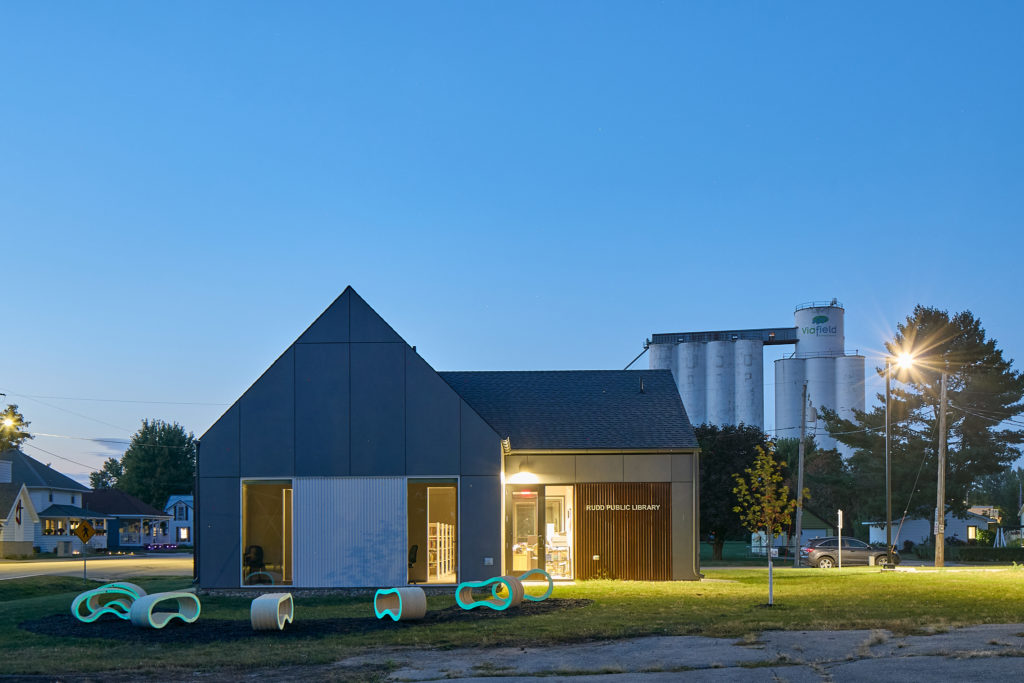
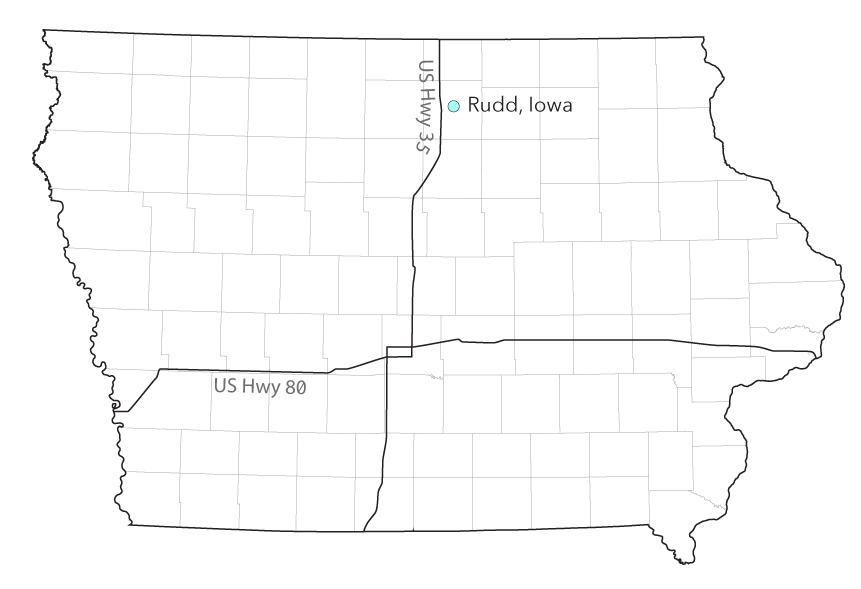
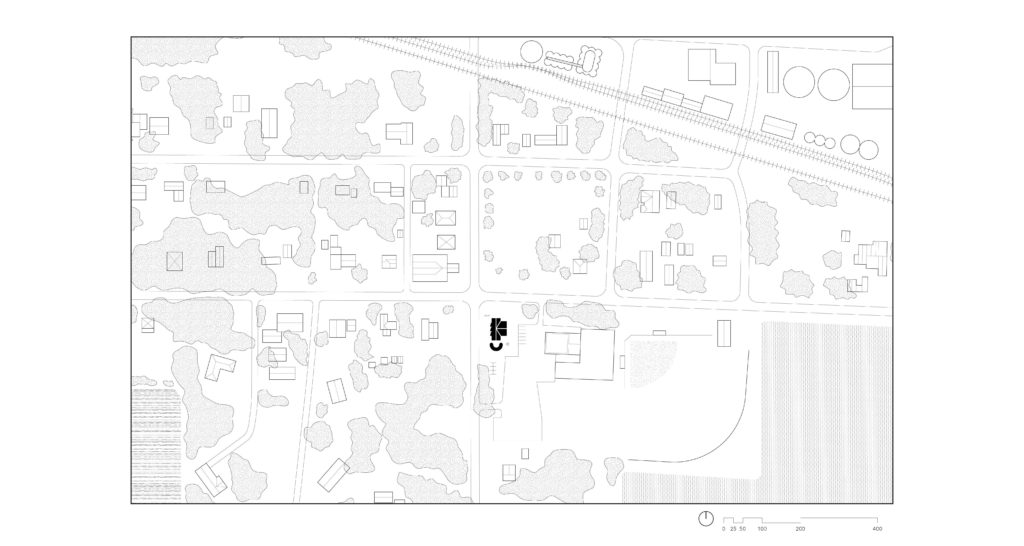
The population peaked around 1960 at 436. From the far southern border of Hwy 27 to Hwy 18 on north and equidistant east to west, Rudd is a perfect square of less than one mile (.87 to be exact).
Like many rural Midwestern communities, the tallest structure on main street, or in Rudd’s case Chickasaw Street, are the corn silos that anchor both the western and eastern edges. There’s also a bar/restaurant, a post office, a bank, and, until Dec. 15, 2021, a library at the northeast corner of the town’s square.
Even in Iowa, where an average of 50 tornadoes are recorded each year, it’s rare to see extreme wind events in December. In the early evening of Dec. 15, though, 63 twisters were spotted in the state. Lives were lost, and more than a billion dollars of property was damaged.
In Rudd, the eye of the F1-rated storm found main street, decimating the 900-square-foot library and flinging 60% of its collection far and wide. The town’s historical society was also destroyed. Homes and buildings were damaged and power lines and trees were knocked down.
Still, the people of Rudd were thankful.
“Our community is six streets wide” says Linda Miller, a longtime Rudd resident and the library board secretary. “Anything bigger than an F1 could have wiped the whole town out. We are very fortunate. We are lucky that no one was hurt or killed. Everything else is replaceable and as a community we have done a pretty good job of that.”
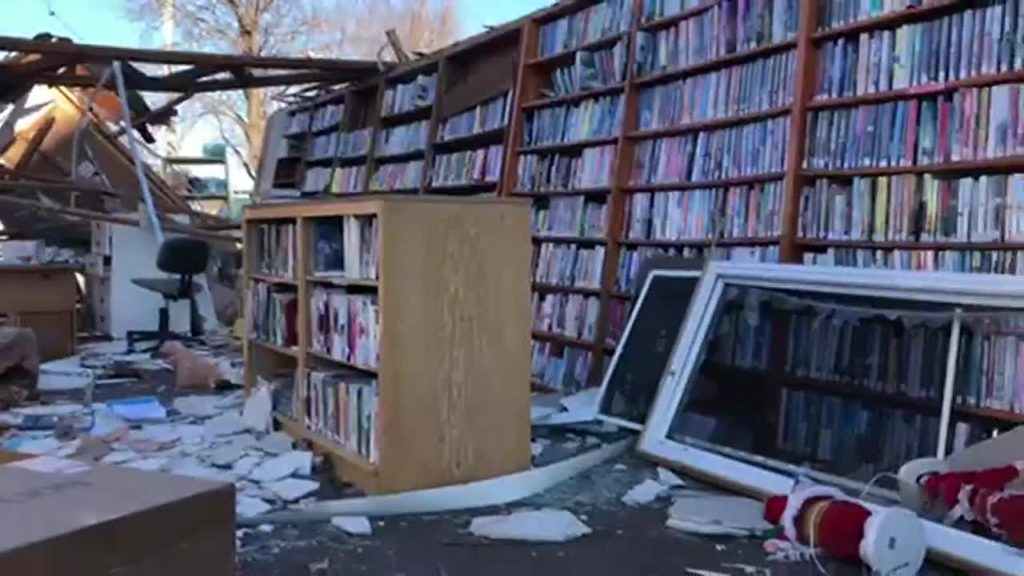
“Our community is six streets wide. Anything bigger than an F1 could have wiped the whole town out.”
Following the storm, the outpouring of support from around the state was heartwarming, former Library Director Shelly Sharp recalls.
Phone lines were down, so the local telephone company routed calls to Sharp’s personal cell phone, which started ringing off the hook.
“The very next day we were just flooded with help. People brought their own heavy equipment to move debris and dump trailers.”
Many wanted to donate books, but there was no place to store materials so Sharp had to turn many well-intentioned donors away.
“It’s been an experience that broke my heart, and warmed my heart, and I never want to do it again,” Miller says. “It’s hard to explain. You don’t realize the emotional impact of that until it happens to your community.”
With the initial storm clean up complete, the library set up in a corner of the city hall conference room. While they were able to provide books, a library is more than its collection and without space to gather, foot traffic was limited.
“Kids especially were hesitant to come into City Hall,” says Sharp. “I had kids just tell me it didn’t feel like the library.”
Built in 1960, the original library was dark and lacked meeting spaces or a designated children’s area, but it was still a hub for activity. Children particularly would often come by after school to use computers.
Realizing the value a library brings to a community, the city and board were committed to rebuilding. With limited funds, though, they wondered how they would start over.
Just as neighbors helped neighbors in the immediate wake of the storm, the answer turned out to be in the form of a Rudd native, whose mother was a longtime board member and volunteer, and who also happened to be an architect.
“We had pretty good foot traffic for having a library in a small town. We would average anywhere from 15 to 30 people daily coming into the library.”
Shelly Sharp, former director, Rudd Public Library
Justin Bishop, a now former principal at OPN Architects, reached out to Sharp to ask how he could help within hours of watching news coverage of the storm and hearing from his parents about the devastation.
Most architects find inspiration in their profession’s ability to make an impact on communities. It’s rare, though, to be able to make such a profound impact on the town you grew up in.
“I’m just so grateful,” Bishop told both Sharp and Miller as the three reflected on the new library. “I’m just so proud of how it’s come together, proud to have worked with you both and the whole board and everybody. It’s going to be hard to beat this one for me.”
Bishop’s pride in the project was clear to Sharp and Miller from the beginning.
“It was fun for us to work with Justin. He’s from this area and we knew he would care what we ended up with.”
What the library ended up with is bigger, though not much, than the original library. But, more importantly, it is better, they say.
“We wanted it welcoming, comfortable,” Miller says. “Our old library was small, and it was dark.”
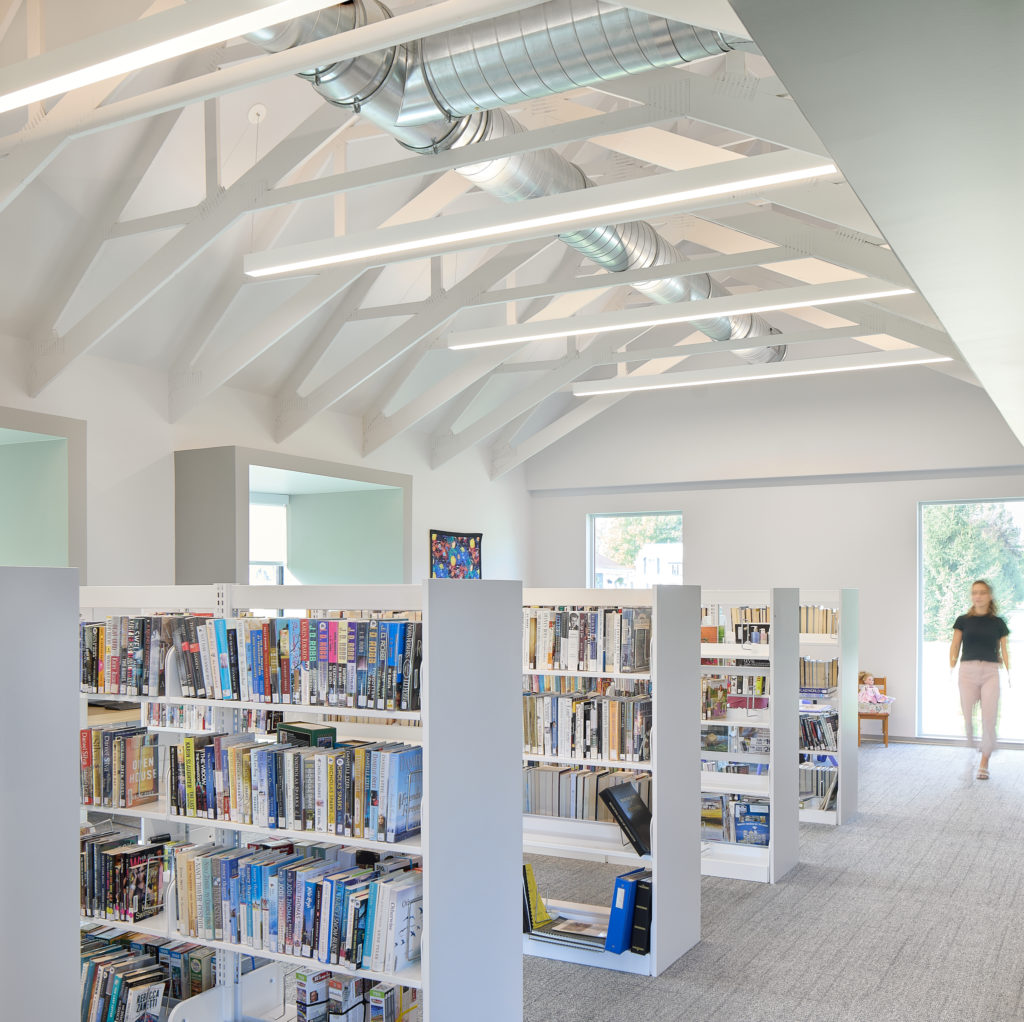
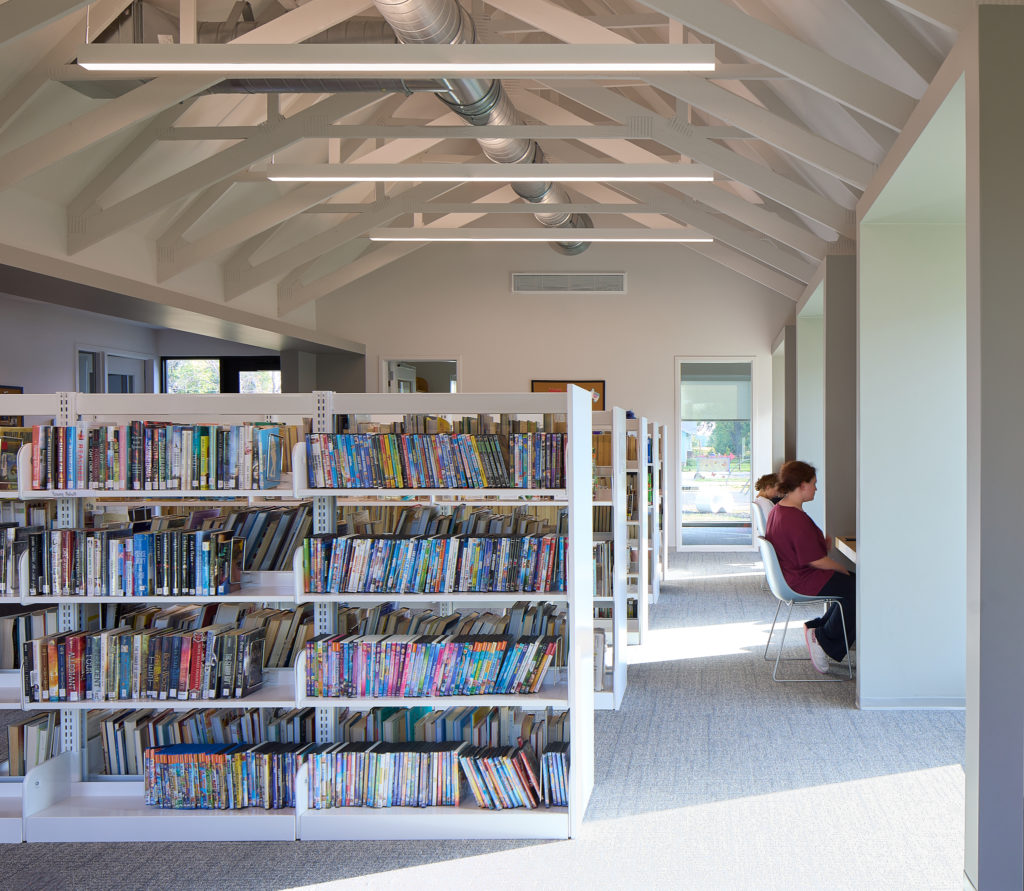
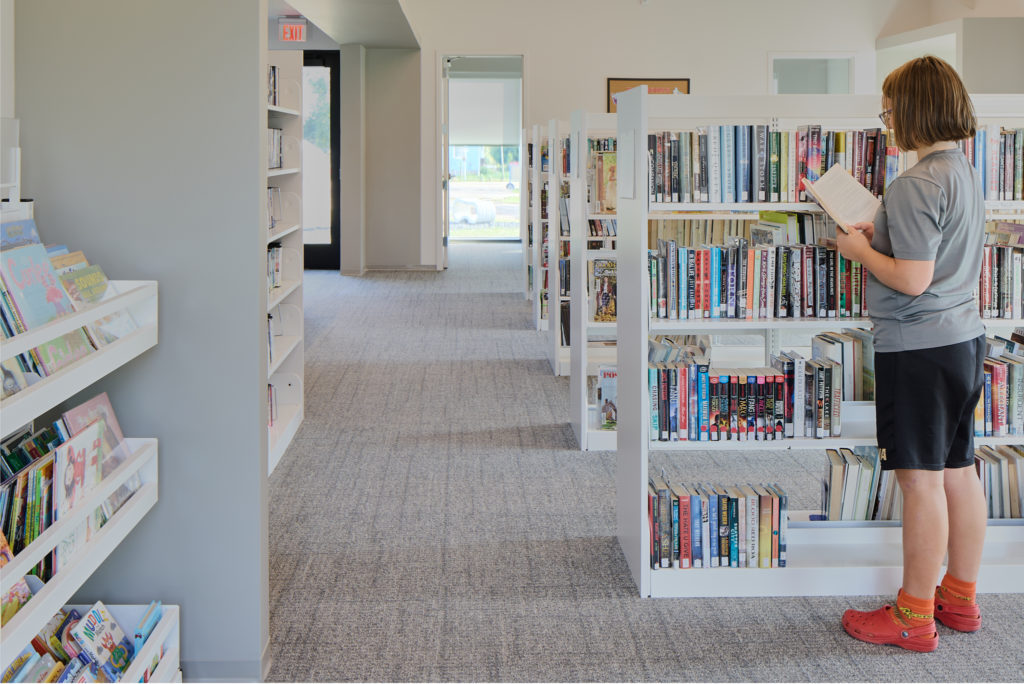
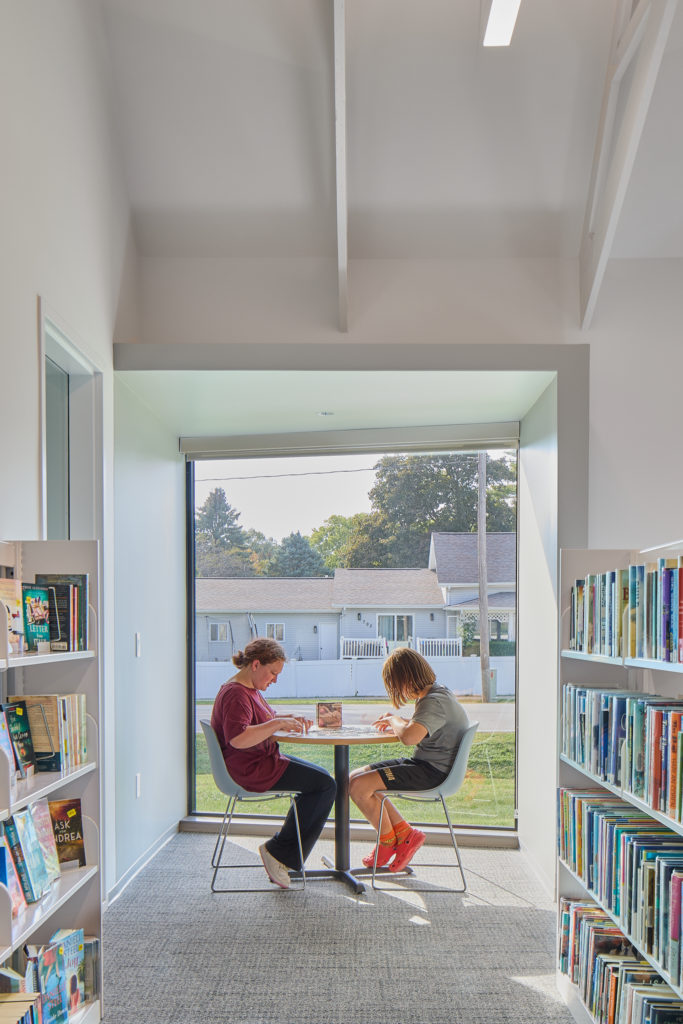
Natural light pours into the new building, which was relocated on a new site next to the town’s recreation center and takes cues from the surrounding residential context. Highly functional, multi-purpose spaces and flexible furnishings make the most of its 1,798-square-foot footprint. Where the old library lacked meeting rooms, storage, and office space for the director, the new library has all of these areas and more, including multiple nooks for reading.
“We’ve had a lot of compliments on the building. How bright it is. They think its roomier than they thought it would be. It’s a lot bigger than it looks from the outside,” says Sharp.
There’s now room for a community closet, a growing collection of 4,000 books, and puzzles, games, DVDs, and newspapers. Most importantly, there’s room for the ladies who play cribbage and “hoot and holler” every Wednesday and every other Friday as well as the book club that meets once a month.
Kids also now feel free to hang out again. It’s not uncommon for several to make their way to the library after school to relax on bean bag chairs, use computers, puzzle, or create with Legos.
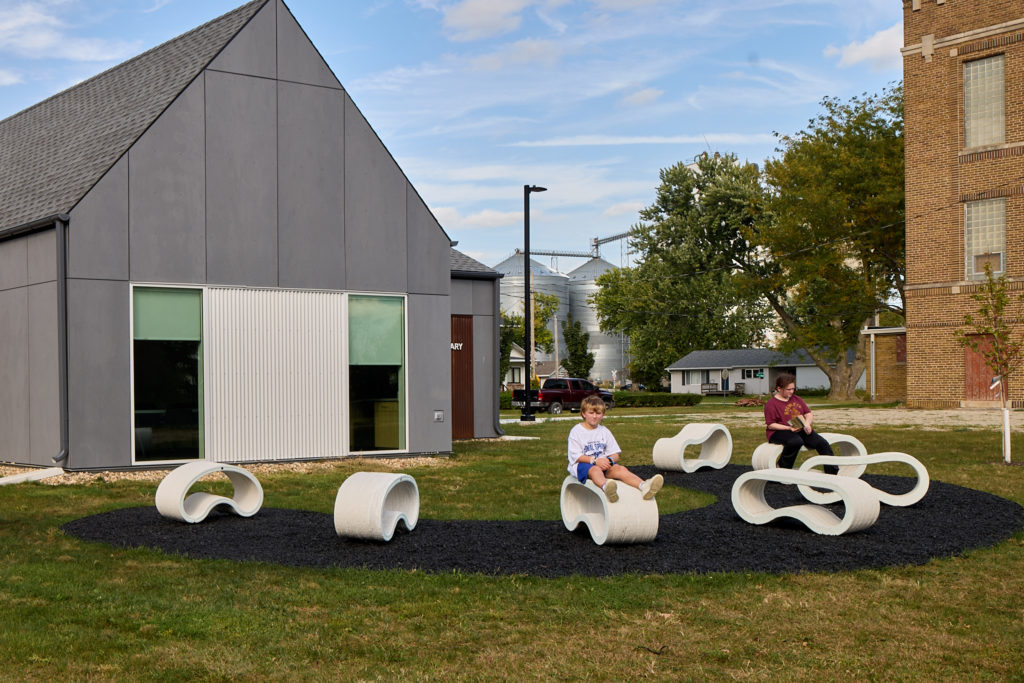
In the warmer months, the library’s space extends outside where seven 3D-printed concrete forms create a semi circle. The curvilinear structures create a space for spontaneous play as well as outdoor story times and other programming. The forms, which glow at night, are also an artistic installation that demonstrate how 3D printed concrete might be integrated into strategies for disaster resilience in small towns.
The result of a university/industry collaboration between the Iowa State University Computation & Construction Lab and OPN, the 3D printed objects were not part of the library’s overall cost, which is an important distinction for a project that cost less than $500,000 to construct.
The project was funded almost entirely by grants and donations, including the proceeds from luncheons and a root beer stand at Rudd Days. More than $2,000 came from a rummage sale that the library continues to hold each year to pay for the operating costs of the new library.
Just as the community came together to rebuild, Rudd continues to support their library. Since reopening, the library has signed up 33 new library card holders bringing the total to more than 200 – over half of the town’s total population.
“Every day is a little different,” says Miller.
“The library is the hub of the community.”
